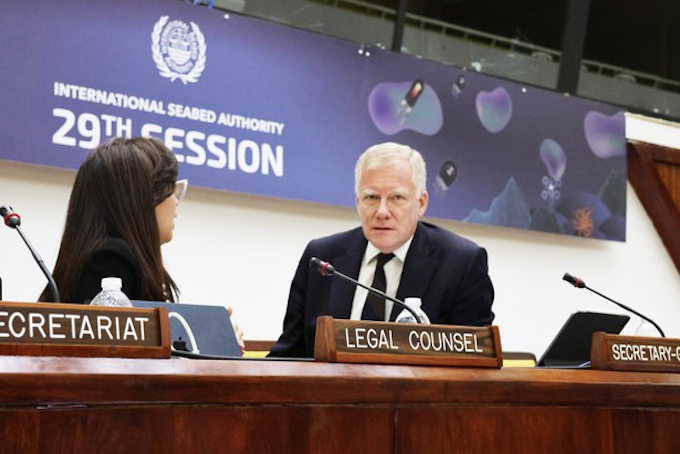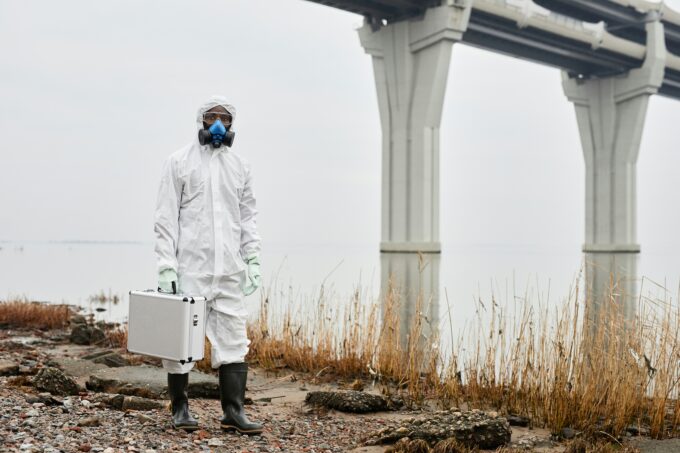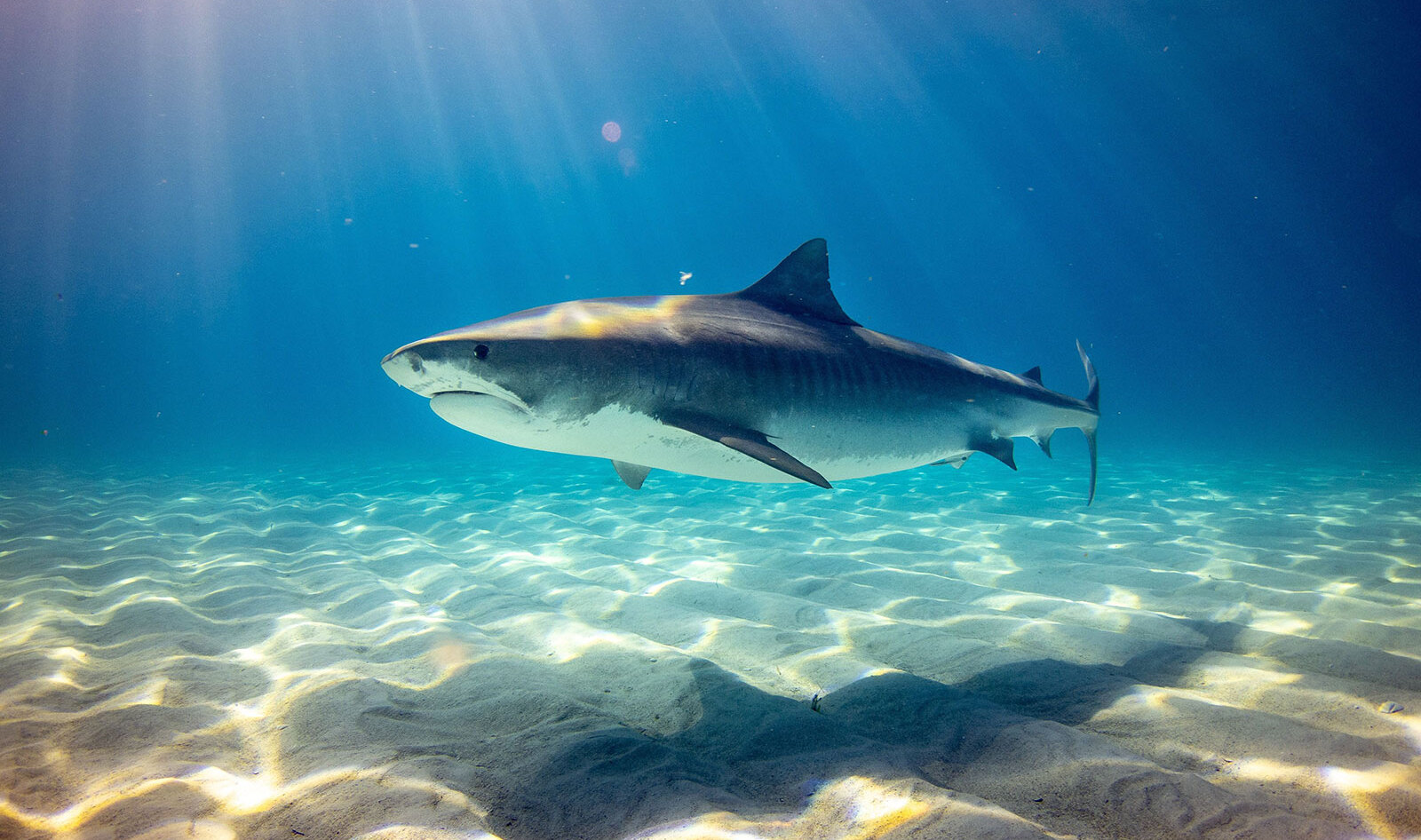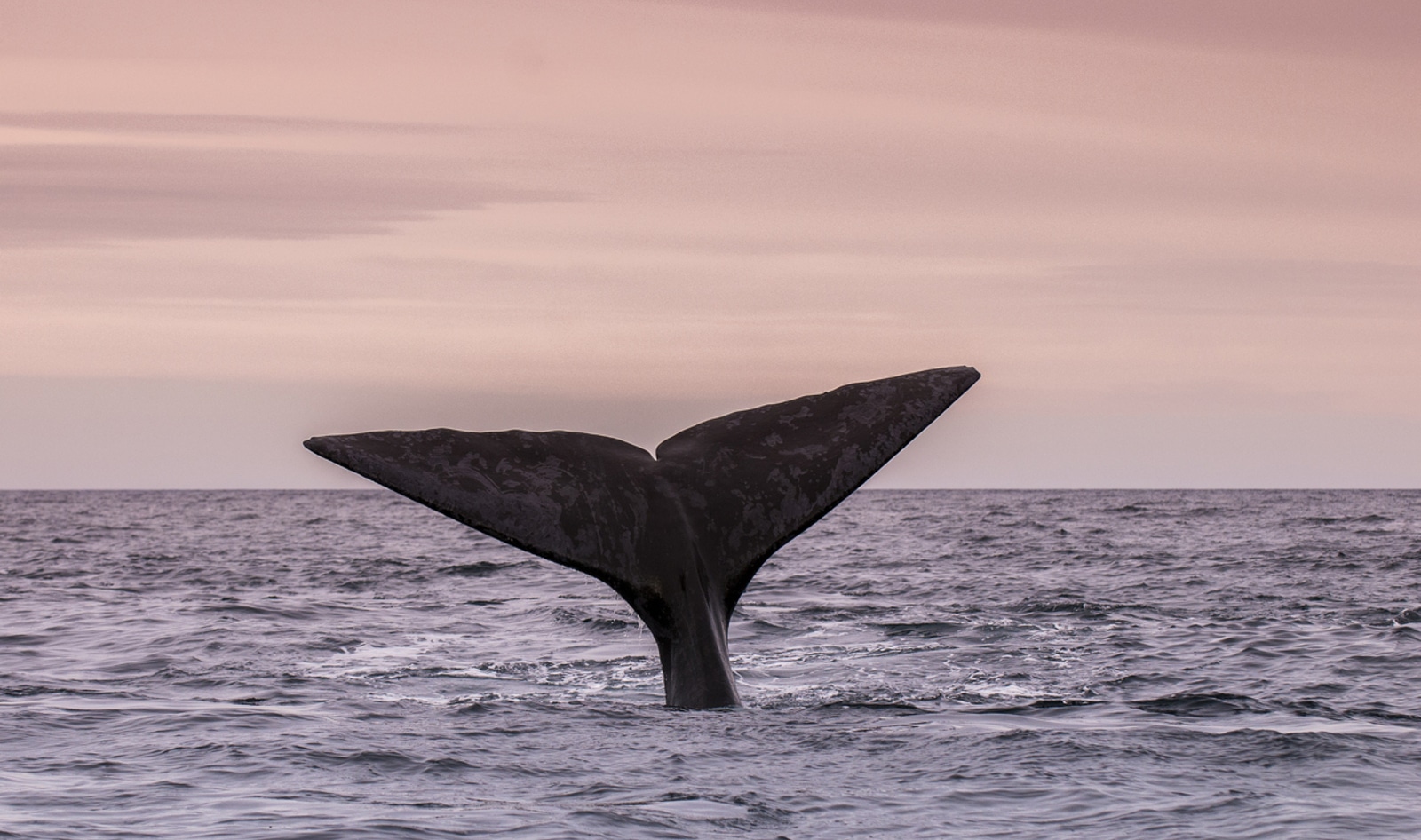by Lulu Ramadan and Sydney Brownstone, The Seattle Times, photography by Karen Ducey, The Seattle Times
This article was produced for ProPublica’s Local Reporting Network in partnership with The Seattle Times. Sign up for Dispatches to get stories like this one as soon as they are published.
In a vast stretch of Central Washington’s high desert, the farms and small towns of Grant County sit on nothing short of a gold mine.
Grant County’s utility district owns two public dams on the colossal Columbia River that are capable of powering more than 1.5 million homes. For decades, this sparsely populated county had enough clean hydroelectricity to meet its own power needs and sell the excess at a low cost across the Northwest.
Then wealthy companies, catering to the insatiable demands of our digital world, arrived in the county. Attracted by the cheap electricity, they built power-guzzling data centers — the warehouses filled with computer servers that back the modern internet. Local officials welcomed the industry’s economic potential.
But with demand soaring and the power from dams finite, Grant County has been forced to look to other sources of energy. The problem is so acute that the county is headed for a daunting choice in the next six years: violate a state green energy law limiting the use of fossil fuels or risk rolling blackouts in homes, factories and hospitals.
High-voltage power lines stretch across the Columbia River at Wanapum Dam, one of two major sources of hydroelectricity for the Central Washington farming community of Grant County.
At least three utilities in other Washington counties are similarly contending with the voracious demands of data centers.
State lawmakers set the stage for this reckoning. In 2019, the Legislature passed a measure to make Washington’s utilities carbon-neutral by 2030. At the same time, in the name of bringing jobs to rural areas, lawmakers encouraged the explosive growth of the data center industry through a massive tax break.
Remarkably, Washington in recent years has gotten a smaller share of its electricity from renewable sources than it did two decades ago, according to the most recent state data. That’s despite the fact the state produces a quarter of the nation’s hydropower.
“Our existing hydro system is pretty much tapped out,” said Randall Hardy, an energy consultant and former administrator of Bonneville Power Administration, the federal agency that owns Washington’s largest dam. “So you’ve got a dilemma of how you’ll meet this additional load from data centers with clean resources or, frankly, with any resources.”
Artificial intelligence, which requires extraordinary computing power, is accelerating the need to build data centers across the world, and experts say the industry’s global energy consumption as of just two years ago could double by 2026. Data centers also are relied upon every day by businesses and people for internet searches, storing photos on the cloud and streaming videos.
Some states and counties with large data center markets have tried to craft policies to mitigate the impact.
For example, Virginia, home to the nation’s largest market for data centers, has contemplated making them improve energy efficiency and use more green power to qualify for tax breaks. Lawmakers recently ordered an assessment of the industry’s impact on power supply.
Georgia lawmakers went further, passing a bill — ultimately vetoed by the governor — to suspend its tax breaks for data centers while officials completed a study on power impacts.
Meanwhile, Washington undermined an effort to study data centers’ power usage. In 2022, Gov. Jay Inslee, one of the nation’s biggest champions of green energy, vetoed a plan — tucked into legislation that expanded the tax break — to understand how much power data centers consume.
His office defended the veto, saying a study would be duplicative of work underway. Although regional power planners have produced wide-ranging forecasts about data centers’ power use, no one has tracked their rapidly growing energy demands in Washington specifically or the impact of the state’s tax break on its power grid, The Seattle Times and ProPublica found.
In a statement, Inslee’s office said the industry is not driving power problems statewide. When asked whether the state should study data center power usage, given its growth, Anna Lising, Inslee’s top energy policy adviser, said there’s no need. “I’m not concerned because we haven’t had resource adequacy issues or service issues as a result of it,” Lising said.
Inslee’s office said he is aware of the need to bring more renewable energy online, and the state is working on it. The statement said Inslee supports the state tax break but would be “open to considering changes.” He declined to be interviewed.
As temperatures rise and Washington phases out fossil fuels, the need for more clean energy to meet everyone’s power demands becomes increasingly critical.
Wanapum Dam is capable of generating enough power for more than 950,000 U.S. homes.
“You get into this question of equity,” said Kevin Schneider, a senior research fellow at Pacific Northwest National Laboratory, a U.S. Department of Energy research facility. “Should people be sitting in overheating houses in order to supply the servers for AI?”
This very dynamic has placed counties like Grant, despite their abundance of clean energy, in the difficult position of finding enough electricity to feed this power-hungry industry. Conversations about potentially costly growth have created rifts between generational farmers and the county’s ever-expanding tech sector, which also has many local supporters.
State Rep. Alex Ybarra, a Republican lawmaker whose district includes most of Grant County, said he believes it’s necessary for the data center industry to continue to grow and considers the state’s climate deadlines unrealistic.
“Let’s not throw the baby out with the bathwater,” Ybarra said about phasing out fossil fuels on the state’s timeline. “If you want to get rid of natural gas, replace it with something before you change it all out. Because if not, we’ll be stuck.”
Inside Data Centers
Hyperscale data centers, like the ones in Washington’s Grant County, are massive complexes that cover a minimum of 10,000 square feet and store more than 5,000 servers.
(Source: International Data Corporation and reporting by The Seattle Times and ProPublica. Graphic by Mark Nowlin/The Seattle Times.)
“Power to the People”
Before the 1930s, most of Grant County had no electricity.
Private utilities refused to serve rural areas like Grant County, tucked between the rugged Cascades and the sun-baked foothills of the Palouse. Frustrated locals banded together to create their own public utility amid a national push for rural electrification often called “Power to the People.”
By the 1950s, the public utility used a federal loan and long-term contracts with utilities west of the Cascades to build one, then two, locally owned hydropower dams. Cheap hydro and the expansion of power lines allowed farmers to install electric irrigation pumps and transform the county from an expanse of desert brush and cheatgrass into one of the nation’s leading potato producers.
Grant County’s Priest Rapids Dam in Mattawa, Washington (first image) and the turbines inside it (second image). Decades ago, the county’s public utility used a federal loan and long-term contracts with other utilities to build Priest Rapids and the Wanapum Dams for hydropower.
Cheap electricity — among the lowest rates in the country — also drew the burgeoning internet industry to the area.
Microsoft and Yahoo in 2006 were among the first to break ground in Central Washington. In 2010, Washington lawmakers, hoping to spur economic growth east of the Cascades, began giving data centers a sales tax break on computer equipment, typically replaced every three to five years, and on their installation. For some companies, that amounted to millions of dollars in savings over time.
Washington eventually became home to at least 87 data centers, according to the industry tracking website Baxtel as of July. Washington is among the top 10 largest data center markets by state, according to Baxtel.
In Grant County, data centers grew to consume more power than any other category of ratepayer, including other industrial customers, residents, farm irrigation, local food processors and commercial businesses, according to utility officials. Data centers in 2022 accounted for nearly 40% of total demand, or about as much as 190,000 U.S. households, according to utility and state data.
Grant County’s power infrastructure, such as the transmission lines across the top of Priest Rapids Dam, once provided most of the electricity used by local ratepayers. Now, with rising demand, the county has turned to “unspecified” sources for 80% of its power.
The increased demand made relying on the county’s traditional source of electricity, the dams, risky, Grant County utility officials said.
So the local utility launched a new arrangement. It signed contracts with big companies that trade in energy, including Shell and Morgan Stanley, agreeing to exchange most of its hydropower for a steady supply of electricity generated by other, “unspecified” sources of energy. Unspecified power comes from the open energy market, where utilities buy available electricity from a mix of fuels. The sources are usually carbon-emitting fuels like natural gas, according to experts.
While the county as a whole grew far more reliant on unspecified power sources, some data centers in Grant County, including Microsoft’s, secured specialized contracts with the county’s utility for guaranteed access to hydroelectricity, enabling them to bank the renewable energy toward their own climate goals.
Right now, Grant County can produce or import enough power to meet its needs. But the county is experiencing an “energy crunch,” according to internal utility documents. By 2025, swapping out hydro for other sources of power will no longer be enough, according to utility officials and documents. The county will be forced to pay out of pocket for contracts with other power suppliers, build its own new sources of generation or consistently buy power on the open market. That’s risky when demand is high and utilities across the West are searching for energy.
In rural Quincy, Washington, tech companies bought swaths of farmland starting in the 2000s and converted it into data centers, giant warehouses that store computer servers.
Utility officials have been reluctant to blame the dilemma exclusively on the data center industry, which county leaders would like to keep growing in hopes of more jobs and property tax revenue.
But an analysis of electricity data by The Times and ProPublica shows the county’s growth in power demand from 2007 to 2022 roughly equaled the demand now attributable to data centers.
Grant County surveyed residents about the energy crunch last year, hoping to gauge how familiar they were with the county’s need to quickly secure power. The survey produced some shocked responses from ratepayers who said they hadn’t realized how quickly demand was climbing, according to utility documents.
“2025 seems pretty darn soon — that we’d be there that quickly. I knew we were growing and had increased demand for power, I just had no idea it would be that soon,” one customer replied during survey interviews.
It will only get harder by 2030, when Washington’s climate laws require utilities to drastically curtail the amount of fuel coming from unspecified sources.
Ty Ehrman, a senior manager at Grant County Public Utility District, worries it will be impossible to generate enough clean electricity fast enough to meet state mandates.
Sunrise in Quincy, where agricultural facilities meet transmission lines
“You’ve really got to kind of start to wonder if we’re going to end up in a place where we end up with rolling blackouts or unintended outages because we haven’t had the full generation capacity to meet it from the green side,” Ehrman said.
Data centers in neighboring Douglas County, which include cryptomining facilities, used about 39% of the county’s electricity in 2022, according to utility and state data obtained by The Times and ProPublica.
In Seattle, which has several data centers that are much smaller than Grant County’s giant warehouses, the industry used at least 10% of the city’s power in 2022 — enough electricity for roughly 90,000 homes. The amount of power used by data centers grew fivefold since 2016, the earliest year of available data from Seattle City Light, the municipal utility.
Dirty Energy
The energy predicament that places like Grant County are facing was far from the spotlight one sunny afternoon in May 2019, when Inslee stood in a Seattle park to sign legislation cementing Washington’s top spot among climate-conscious states.
Inslee, who co-authored a book in 2007 calling for bold action against climate change and ran for president on climate issues, declared Washington would lead the nation by eliminating carbon-emitting energy sources.
“We aren’t done,” Inslee said. “Our success this year is just a harbinger of successes to come. But we’re ready. We can do this.”
Gov. Jay Inslee shakes then-Seattle Mayor Jenny Durkan’s hand after signing landmark bills in 2019 to wean Washington off fossil fuels. Rising demand from data centers could affect the state’s clean energy plans.
(Bettina Hansen/The Seattle Times)
The Clean Energy Transformation Act calls for Washington’s utilities to become greenhouse gas “neutral” by 2030 and to have 100% renewable or noncarbon-emitting power by 2045.
Washington was poised to struggle with this target because of the nature of renewable energy. Hydropower is a finite resource without building new dams — a hard sell because of the impact on endangered salmon. With current technologies, the availability of solar and wind power depends on weather conditions.
The state has added miles and miles of wind turbines and solar farms to its grid in recent years, making up about 9% of its fuel mix in 2022, and is mandating more energy-efficient buildings in the name of power conservation.
But those efforts compete against growing demand not just from data centers but also from the ongoing transition away from gas-powered vehicles, appliances and industries. Decisions like Grant County’s to exchange dam-generated power for unspecified sources have also reduced the amount of hydro in the state’s energy mix.
The Wanapum Dam on the Columbia River is owned by the Grant County Public Utility District. Washington’s dams, including those owned by the federal government, produce about a quarter of the nation’s hydropower.
The net result: The share of hydropower in Washington’s electricity supply fell from an annual average of two-thirds in the early 2000s to just 55% in the five years leading up to 2022, the latest year with data. The share for all renewables fell from 67% to 61%.
Meanwhile, Washington’s reliance on natural gas and unspecified fuels has increased, accounting for about a quarter of the state’s electricity on average from 2018 through 2022.
Washington’s Electricity From Hydropower Has Gone Down While Nonrenewable Sources Have Grown
Note: Renewable sources of electricity are hydropower, wind, biomass, geothermal and solar. Nonrenewable sources include nuclear, coal, natural gas, petroleum, waste, landfill gas, cogeneration and others.
(Source: Washington Department of Commerce)
The dependence on unspecified fuel became the most pronounced in two Central Washington counties with major data center markets, state data shows. In Grant County, because it sold hydro in exchange for energy from other fuels, more than 80% of electricity came from unspecified sources in 2022.
Douglas County also has experienced rapid growth in data centers, and it had a dramatic drop in its percentage of hydropower.
Microsoft, which built data centers in both counties partly because of hydropower, also understands the limits of this energy source and is “not going to push something until a break,” said Noelle Walsh, who leads the team responsible for the company’s data center operations.
The company has committed to eliminate its carbon emissions by 2030 and recently expanded data center operations in Arizona partly due to constraints on the availability of renewable energy in Washington, Walsh said.
Transmission lines that carry power across the Columbia River Basin run past agricultural fields near Vantage, Washington.
The possibility that data centers would make it harder to phase out fossil fuels rarely came up when lawmakers created and then expanded the tax break that encouraged data center development since 2010.
Reuven Carlyle, a former lawmaker who spearheaded Washington’s clean energy law, said, in hindsight, the cumulative impact has become clear. “The aggregation of demand today — now that is a serious concern,” he said.
The concern finally came onto the Legislature’s radar in 2022, when lawmakers took up the latest proposed expansion of the tax break. They voted to authorize up to $400,000 to study data center power usage in Washington.
“We wanted answers about this industry that we were about to unleash successfully in our state again,” said Rep. April Berg, D-Mill Creek, who sponsored the legislation. She and other lawmakers had heard “anecdotally” about data center power usage but wanted more details, she said. “A study could have come back and said, ‘Here are all the potential issues.’”
Inslee, the leading champion of clean energy goals, stood in the way of doing so in Washington. He vetoed the provision calling for an energy study — one of just 18 full or partial vetoes out of more than 300 bills that crossed his desk that year.
State Rep. Alex Ybarra, right, and Kelley Payne, a spokesperson for the state House of Representatives, lead a tour of Quincy’s state-of-the-art high school, which opened in 2019 and was financed with property tax revenue that city and state officials have attributed to data centers.
Inslee’s office justified it by saying the Northwest Power and Conservation Council was already doing the work that was needed.
The council does release regional power use forecasts, including for the data center industry based on limited publicly available information and utility trends.
But the provision that Inslee vetoed was intended to provide answers that the council has not, its sponsors said: information specific to Washington’s data center industry and how the state’s tax incentives impact the power grid. The bill also included language designed to ensure the research wasn’t duplicative of the council’s work.
The council’s forecasts for data centers this year were wide-ranging, where lawmakers had hoped for more precise data to inform future policy decisions.
Sen. Matt Boehnke, who co-wrote the study provision, said he was shocked and frustrated by Inslee’s veto of a provision approved with bipartisan support. Lawmakers had been in touch with the governor’s office while writing the bill, he said.
“Why veto it last-minute? Why not work with us to amend it?” said Boehnke, a Richland Republican.
When asked about the impact of data centers on the ability of utilities to meet Washington’s clean energy mandate, Inslee’s office said that the increased use of unspecified power is driven by Grant and Douglas counties. Both have large data center markets.
Inslee’s office said in its statement that Grant County’s choice to swap hydro for energy from unspecified fuel sources was “a business decision” by the utility and that it is still responsible for complying with the state’s green energy law.
Asked to comment on the governor’s office’s position, officials in Grant County said they made choices they felt were necessary to keep the lights on.
While Washington lawmakers didn’t get the study of state power use they authorized, the numbers for the region as a whole are eye-popping.
The power and conservation council predicted this month that by 2029, data centers in the Northwest could grow to use more electricity than the average annual consumption of Puget Sound Energy, the region’s largest utility with more than 1.2 million residential, commercial and industrial customers.
That’s a middle-of-the-road estimate. On the high end, the council estimated that power-guzzling data centers could push the grid past its limits in just five years.
“The power demand from data centers,” said Hardy, the former Bonneville Power Administration official, “combined with other growing demands, and with that transition from fossil fuels to renewables, will inevitably lead to big rate increases.”
Unease in Grant County
In Grant County, the rise of data centers has created a sense of unease for some residents.
In October, rumors about major rate hikes targeting Grant County’s data centers started to spread after utility Commissioner Nelson Cox said he supported doubling their rates. The utility wasn’t considering such a proposal — the comment was meant to “shock and awe” and spark conversation, Cox later said — but data center lobbyists and executives rallied.
Microsoft operates one of the largest data centers in Quincy. The nondescript campus houses giant warehouses and diesel-powered backup generators.
“If we are to have any chance of stopping this, WE NEED TO PACK THE COMMISSION ROOM ON TUESDAY 10/24,” read an email from Ryan Beebout, a vice president at Sabey, a Seattle-based company that owns data centers across the state. The email, obtained by The Times and ProPublica through a public records request to the utility, went out to a coalition of Central Washington data centers that included executives at Microsoft and Yahoo. Beebout and Sabey did not respond to requests for comment.
Representatives from data center companies filled the commission chambers for the October meeting and pushed back against rate hikes for industrial customers.
Grant County Public Utility District Commissioner Nelson Cox, a farmer, rattled some data center operators last fall after he suggested doubling the industry’s power rates. His comment was only meant to “shock and awe,” Cox later said.
Cox cut in. The timing of this entire discussion wasn’t right, the utility commissioner said, noting that it was the middle of harvest season, when farmers couldn’t take time to show up. He encouraged representatives from agriculture and tech to attend a November meeting.
Come November, the commission chambers of the Grant County Public Utility District were as crowded as longtime employees had ever seen them. Half the room wore dirt-covered work boots and flannel shirts; the other half wore loafers and pressed button-downs.
Grant County needed to raise power rates, commissioners said. How the utility would implement the increases turned into a debate over identity, pitting farmers against tech workers. The leading proposals that were on the table would hit farmers harder than data centers.
Murray Van Dyke runs his tractor on the alfalfa fields of his family farm near Quincy in March. He and fellow farmers attended a Grant County Public Utility District meeting in November to voice concerns about the possibility of new electricity rate hikes amid the growth of data centers.
Murray Van Dyke, a hay and alfalfa farmer in his 70s, stood up and asked to speak. The need to build costly new infrastructure, a key factor behind talk of rate hikes, was driven by “one area of our town that uses a lot of power,” Van Dyke said, a reference to data centers.
Van Dyke and other farmers shared concerns about being asked to bear the costs. “We’re just trying to be fair,” he later told The Times and ProPublica.
High-power transmission lines run between an Amway manufacturing facility, left, and a Microsoft data center, top left. The rising use of artificial intelligence is expected to increase demands for power.
As local utilities like the one in Grant County grapple with the impact data centers are having on the electrical grid, one influential Washington lawmaker is rethinking whether the state should promote the industry’s growth through tax breaks.
Sen. Jamie Pedersen, D-Seattle, the majority floor leader, voted in favor of the data center tax break in 2022. But given the state’s goals for electrification and moving away from carbon, he said he doesn’t find the industry’s economic development promises as compelling as he once did.
“It doesn’t any longer seem like it’s a great idea to put a bunch of super energy-hungry data centers in the middle of the state using a lot of our clean electricity,” Pedersen said.
About the Data
The Washington Department of Commerce collects from public and private utilities annual data tracking the fuel used to deliver electricity to their customers. The data — available for 2000 through 2022 — breaks down a utility’s fuel mix into categories that include hydropower, natural gas and nuclear energy.
Some electricity falls into the category unspecified, used for power purchased from an open market across the region. The power is untraceable as it is made up of a mix of available fuels. Experts say that most of that fuel is typically natural gas.
Before 2018, Washington officials used an industry formula to break down how much unspecified fuel came from each of the named categories of fuel sources. The state abandoned the effort because the formula wasn’t necessarily an accurate way to attribute fuel sources, said Glenn Blackmon, Washington’s energy policy manager.
Coincidentally, local data from Grant County shows 2018 was also a year when its use of unspecified power jumped after signing additional contracts to sell most of its hydro supply. The numbers indicate that the growth statewide that year was not merely attributable to Washington’s change in accounting methods. Increases in unspecified power use by Chelan and Douglas counties came well after the accounting change.
Because water levels fluctuate from year to year, the amount of hydropower generated in Washington varies. Blackmon said it’s best to compare 2016 and 2022, the recent period when water levels were most stable. The share of hydropower in the state’s electricity mix dropped 10 percentage points. The overall share of renewables also declined.
Without statewide figures on data center power usage, The Times and ProPublica attempted to track trends by collecting data from a handful of public utilities with large data center markets, including Grant County’s. Many utilities do not track data centers, and such data is not available from private utilities.
Seattle City Light, the municipal utility, doesn’t track all data centers but formulated its best estimate of their energy use at our request.
Eli Sanders contributed research while a student with the Technology, Law, and Public Policy Clinic at the University of Washington School of Law.
This post was originally published on ProPublica.












 Pexels
Pexels
 Beyond Meat
Beyond Meat






 Ron Lach/Pexels
Ron Lach/Pexels Maison Jar
Maison Jar Maison Jar
Maison Jar Rind
Rind Maison Jar
Maison Jar re_grocery
re_grocery The Refill Shoppe
The Refill Shoppe Fillgood.co
Fillgood.co The Zero Market
The Zero Market











 Unsplash
Unsplash Unsplash
Unsplash



.jpg) Unsplash
Unsplash






